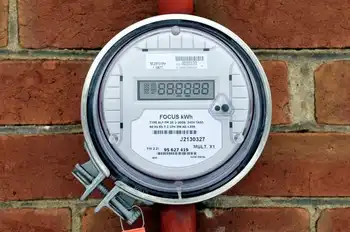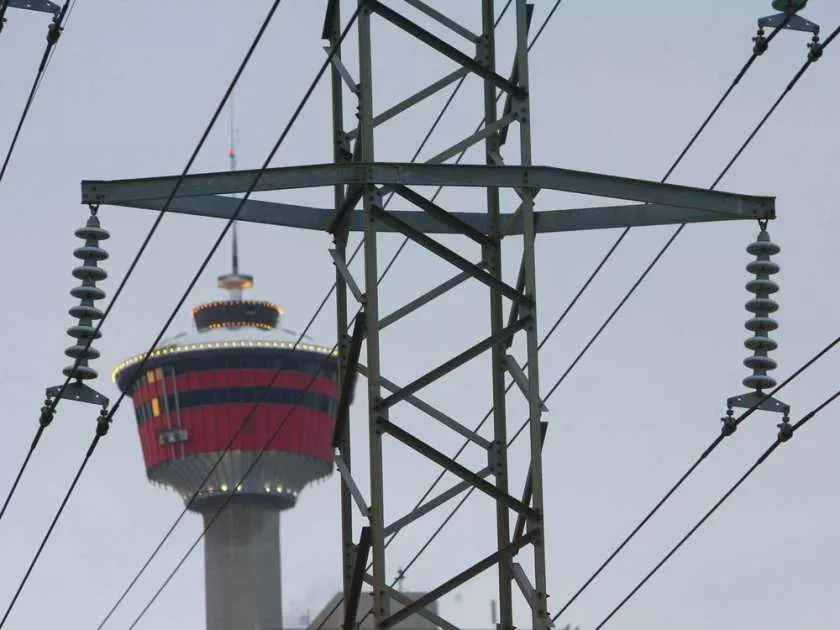PEI officials plan self-sufficiency using wind power
By The Globe & Mail
Substation Relay Protection Training
Our customized live online or in‑person group training can be delivered to your staff at your location.

- Live Online
- 12 hours Instructor-led
- Group Training Available
A wind farm located on the northern tip of PEI now produces 5 per cent or about 11 megawatts of the power used by the province's 139,000 residents.
But provincial politicians and energy officials have embarked on an ambitious plan to provide all the province's 200 megawatts of electricity from lofty turbines rotating in the island's brisk breezes.
The success of the wind power plan, which Energy and Environment Minister Jamie Ballem says would make the province a model for the rest of the country, hinges on a combination of higher conventional fuel prices, improved windmill technology, political will for the project, attracting private investment and continued Canadian support for the controversial Kyoto accord.
"The scary part of what we're doing right now is that the decisions we're going to make [about promoting and investing in wind power] will impact on this province for the next 40 years. That's also the most exciting part of what we're doing," Mr. Ballem said in an interview this week as he prepared for a trip to Europe to look at wind power sites.
Experiments on producing power from the often gale-force winds that pound northern PEI have been going on for more than 20 years at the Atlantic Wind Test Site. But the cost of producing electricity from the small turbines was prohibitive and the supply of energy depended on how often and how hard the wind blew.
Only recently has the combination of larger, more efficient turbines, which can crank out as much as three megawatts, and the increased cost of power produced from oil and coal narrowed the gap so that wind energy can compete for a place on power grids. A decade ago the cost of producing a kilowatt hour from wind was 10 cents -- that has been lowered to about 7 cents. The cost of producing electricity from coal is about 4 cents a kilowatt hour.
The Canadian Wind Energy Association predicted last week that turbines capable of producing another 112 megawatts of electricity will be built across Canada this year, bringing wind electrical capacity to more than 450 megawatts or about 0.25 per cent of the power used nationally.
The future of wind energy has also been debated during the federal election campaign, with the Liberals, NDP, Bloc Québécois and the Green Party all advocating dramatic expansion of wind technology across Canada. The Conservatives have promised to investigate alternative energy sources.
Advocates of wind power are also hoping that it will get a boost from investment from energy companies under the Kyoto accord. That agreement will require utilities to commit to reducing production of greenhouse gases from conventional power plants, but power companies could also use an investment in wind energy as a green credit to reduce their Kyoto obligations.
"If it's going to cost you $2-million to retrofit a plant but you can spend $100,000 on a wind project for the same result then it's worthwhile to look at that," Wayne MacQuarrie, manager of the PEI Energy Corp. said in an interview.
A recent strategy paper on renewable energy done for the PEI government said it would require an investment of $300-million to reach the province's goal of producing 200 megawatts from wind.
At the same time, the province, which has no petroleum, coal or hydro resources, has to import most of its power from New Brunswick and has long yearned for a cheaper source of energy that could be produce on the island.
Carl Brothers, manager of the North Cape site, who has tested the power potential of PEI breezes for two decades, said many utilities are still balking at the cost of wind energy. "But cheap energy is gone and we're just going to have to come to grips with that. How do you quantify the cost of the pollution produced from conventional plants? Wind is the technology that stands ready to push us into a sustainable energy system," Mr. Brothers said in an interview, while the paddles of the huge turbines hummed as they rotated.
That would require the establishment of several wind farms across the province. The wind test site last fall doubled the number of its turbines and is now producing power from 16 of the units. Aeolus PEI, a division of Vestas Canadian Wind Technologies recently erected a three megawatt turbine near North Cape.
Then there is the problem of what to do when the wind doesn't blow -- on Prince Edward Island that is about 25 per cent of the time. The province has asked the federal government to assist in funding a $15-million hydrogen village pilot project. The wind from North Cape would create electricity that would be converted to hydrogen that in turn could be used to power generators on calm days.
Mr. Ballem said PEI wants to test hydrogen as a fuel to run a couple of fishing boats and a farm tractor. If that works then the use of the hydrogen would be expanded throughout a fishing village and would ultimately be used to produce electricity.
He said the province has received several expressions of interest from private companies from Canada, Germany and the United States anxious to get involved in harnessing the island's winds.
The province is hoping that its energy corporation and the private ventures can jointly fund the wind projects. One of the proponents, J.D. Irving Ltd. of Saint John has had to scale down a proposed wind farm project near Malpeque Bay due to concerns about the noise and appearance of the towers.
Mr. Ballem said many other islanders have welcomed the advent of wind energy and are anxious to participate in its development.
"I want to make PEI the green part of Canada," Mr. Ballem said. "Our biggest job will be convincing the other governments, primarily the federal government to let PEI be a leader -- we need help to do that."











